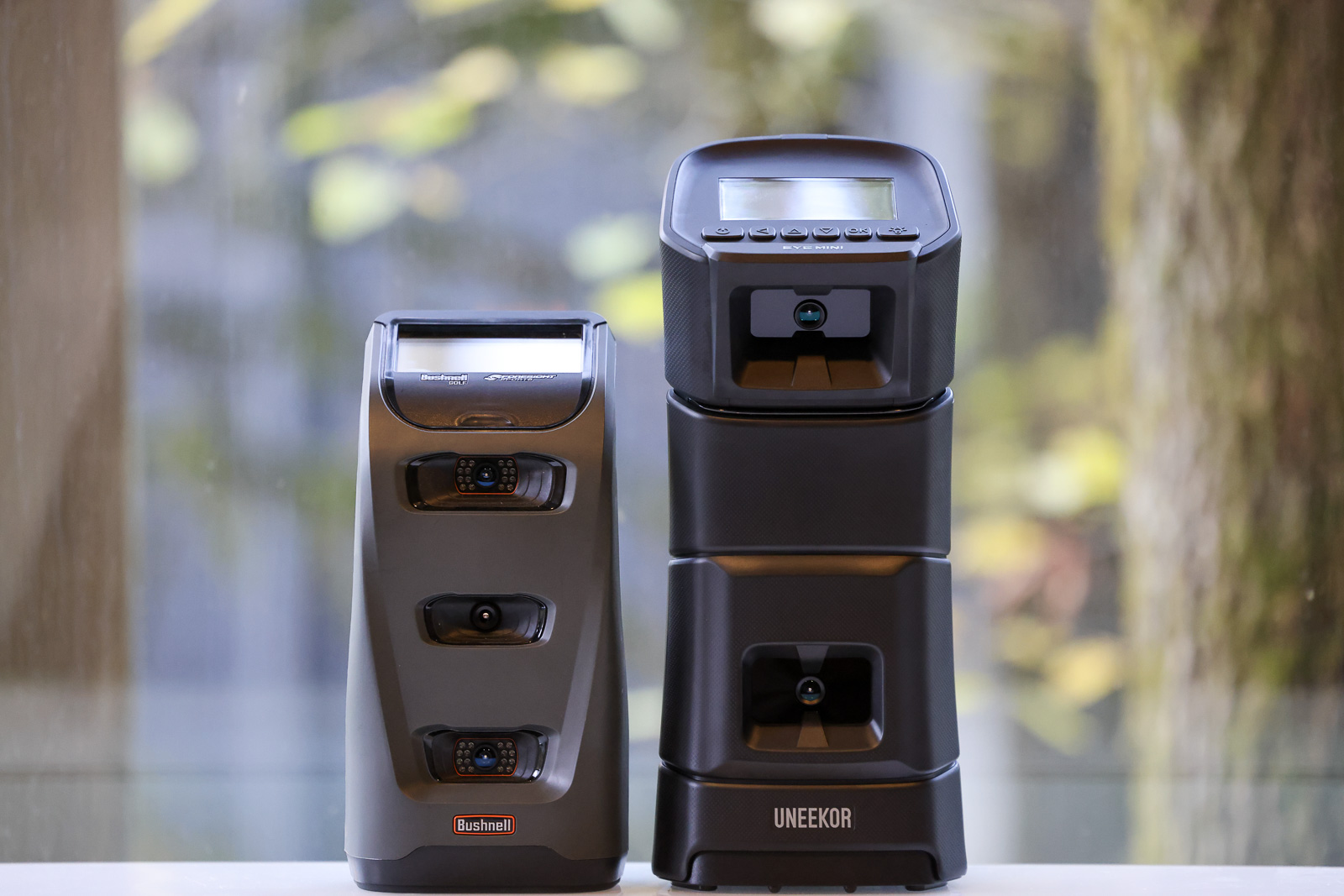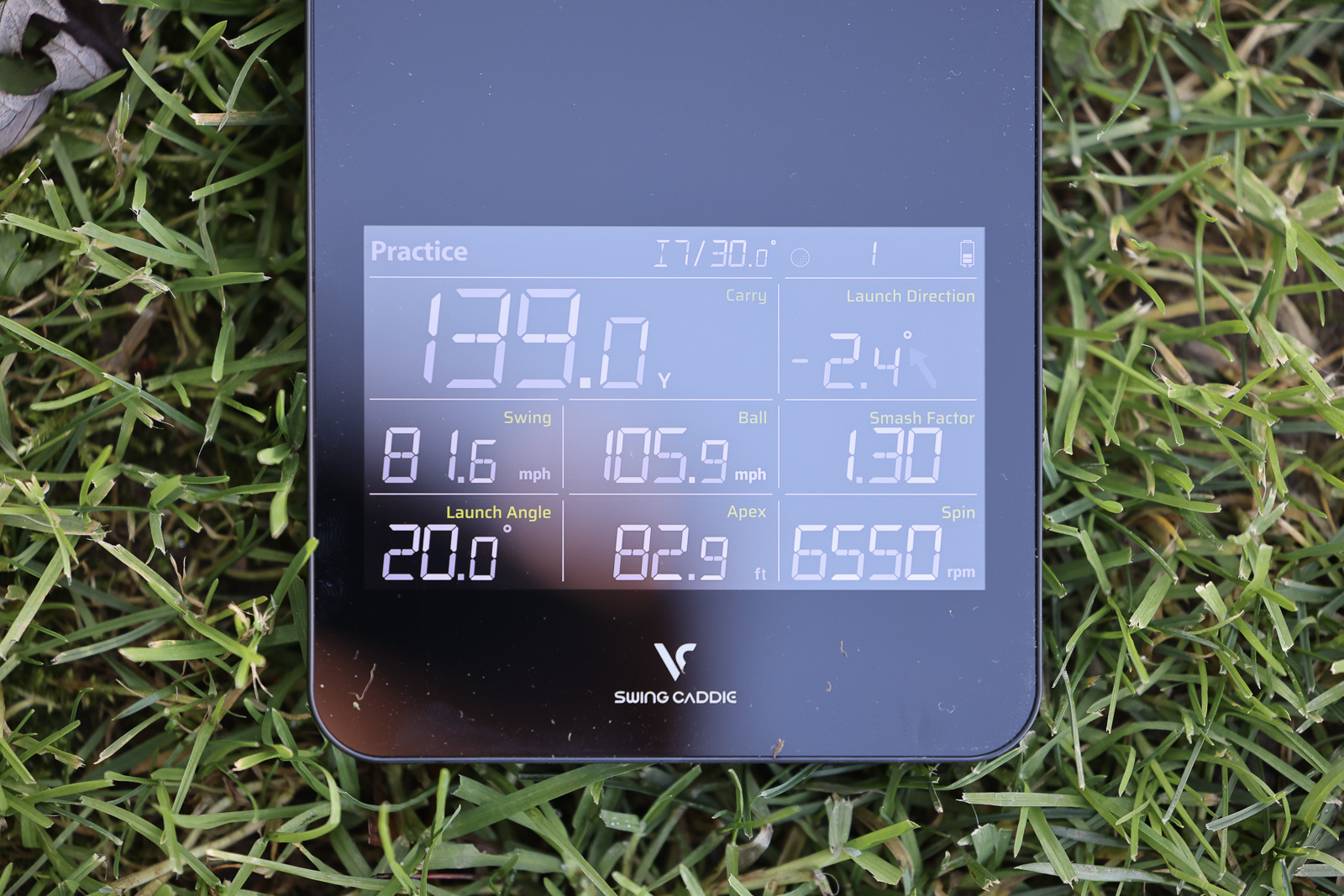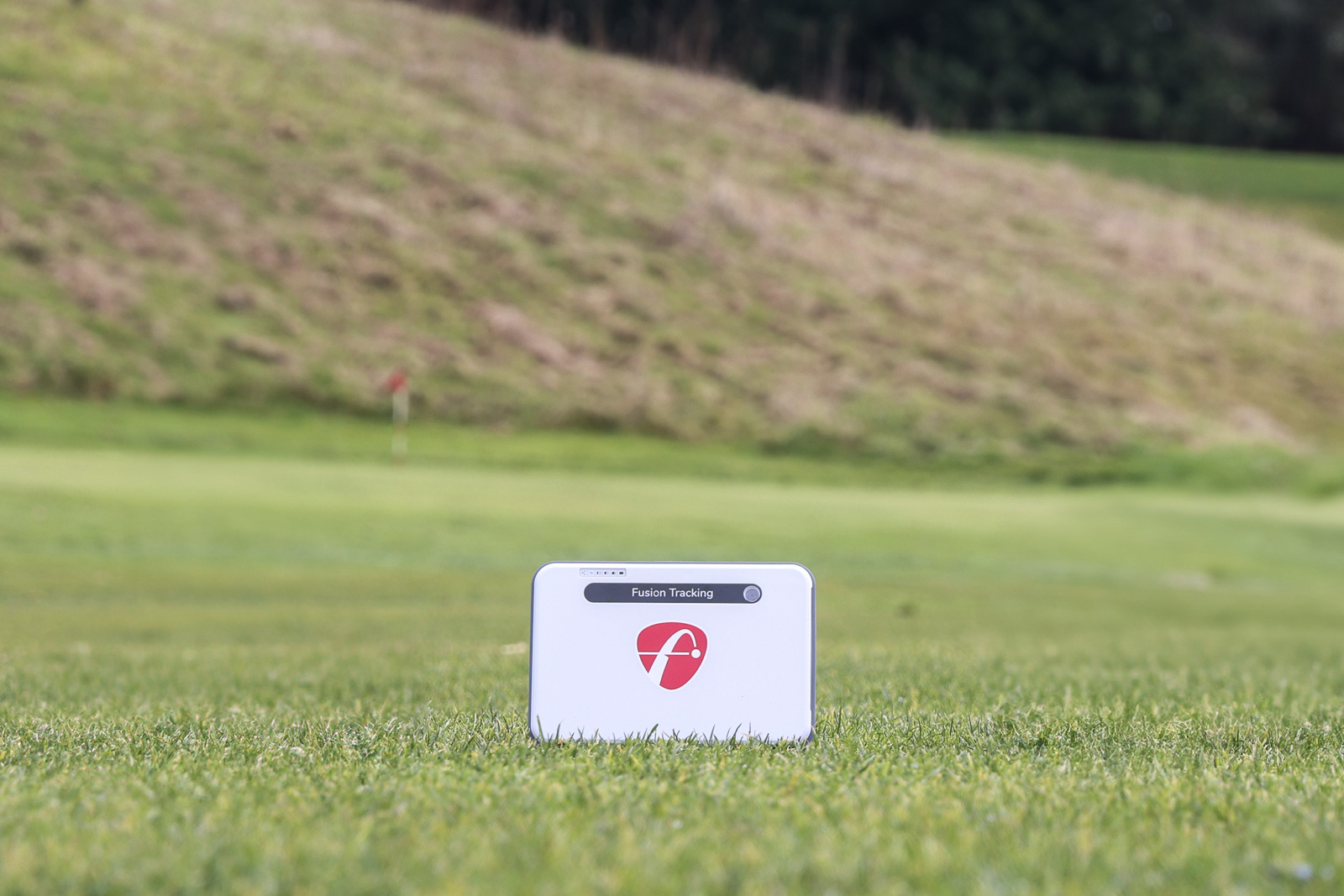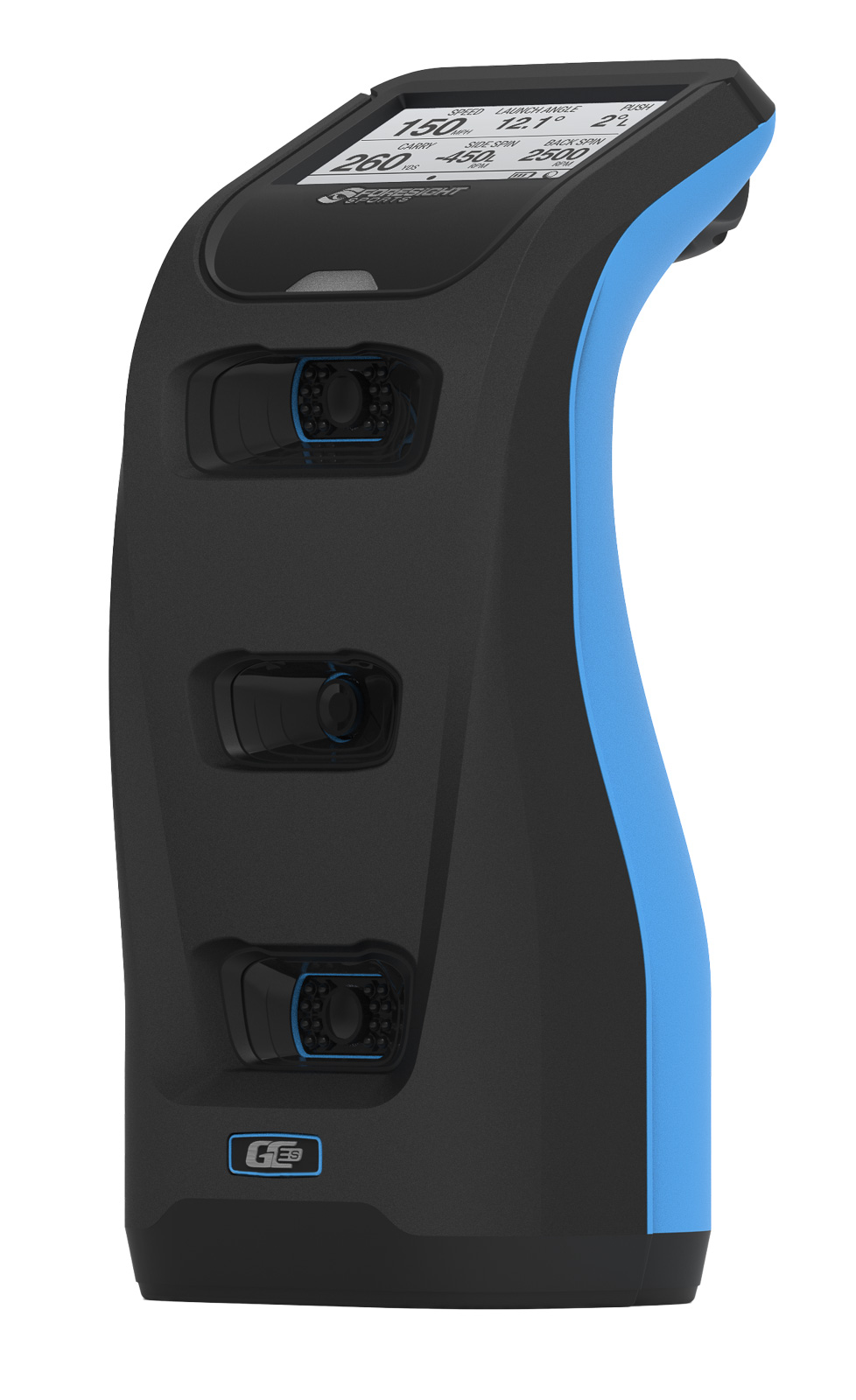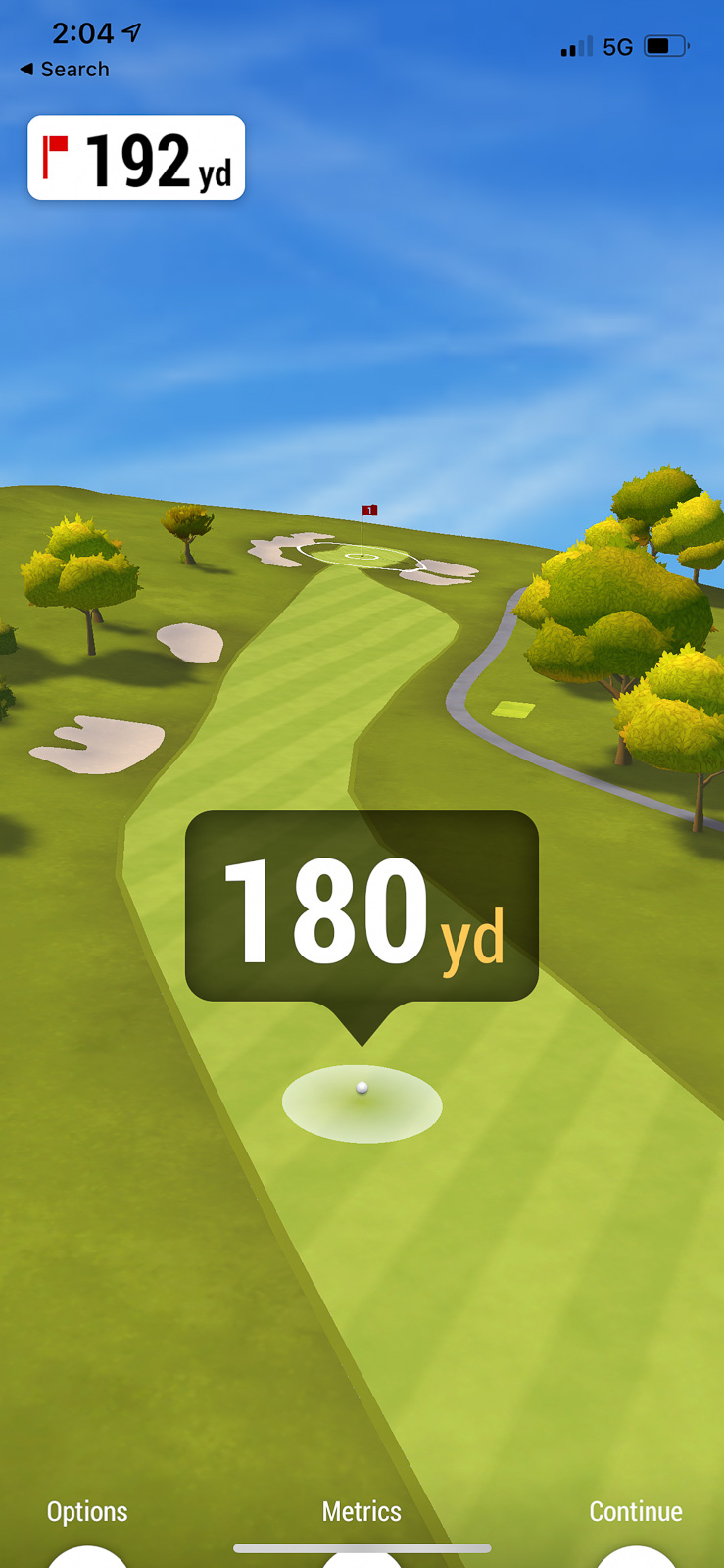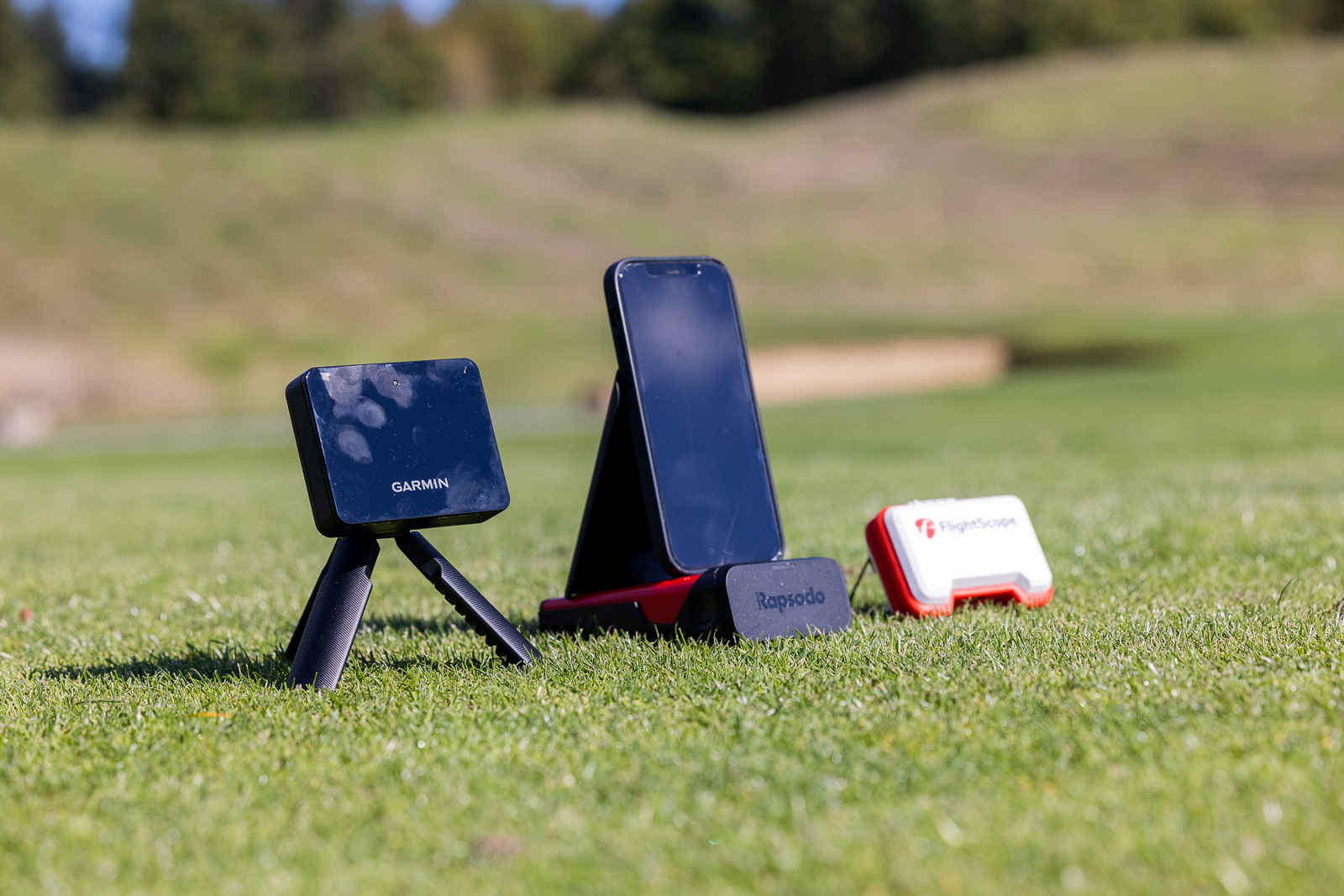Even more than price, I think confusion is the biggest barrier to entry for a lot of would-be golf launch monitor owners.
There’s so much information out there, much of it conflicting, that it’s hard to cut through the noise to get to the essence of what you should really be considering if you’re going to buy one of these devices.
There is no one-size-fits-all best.
There’s only what’s best for you.
But if you’ve never owned a launch monitor, how are you supposed to know what “best” even means in this context?
10 Questions to Answer Before Buying a Golf Launch Monitor (or Simulator)
Yeah, shopping for a launch monitor can be a ton of fun. But it can also be really daunting and confusing.
I’ve narrowed it down to what I think are the 10 key questions you need to answer before you buy a golf launch monitor. If you satisfy each one of these criteria, you’re definitely going to have a launch monitor that’s right for you. So, keep reading.
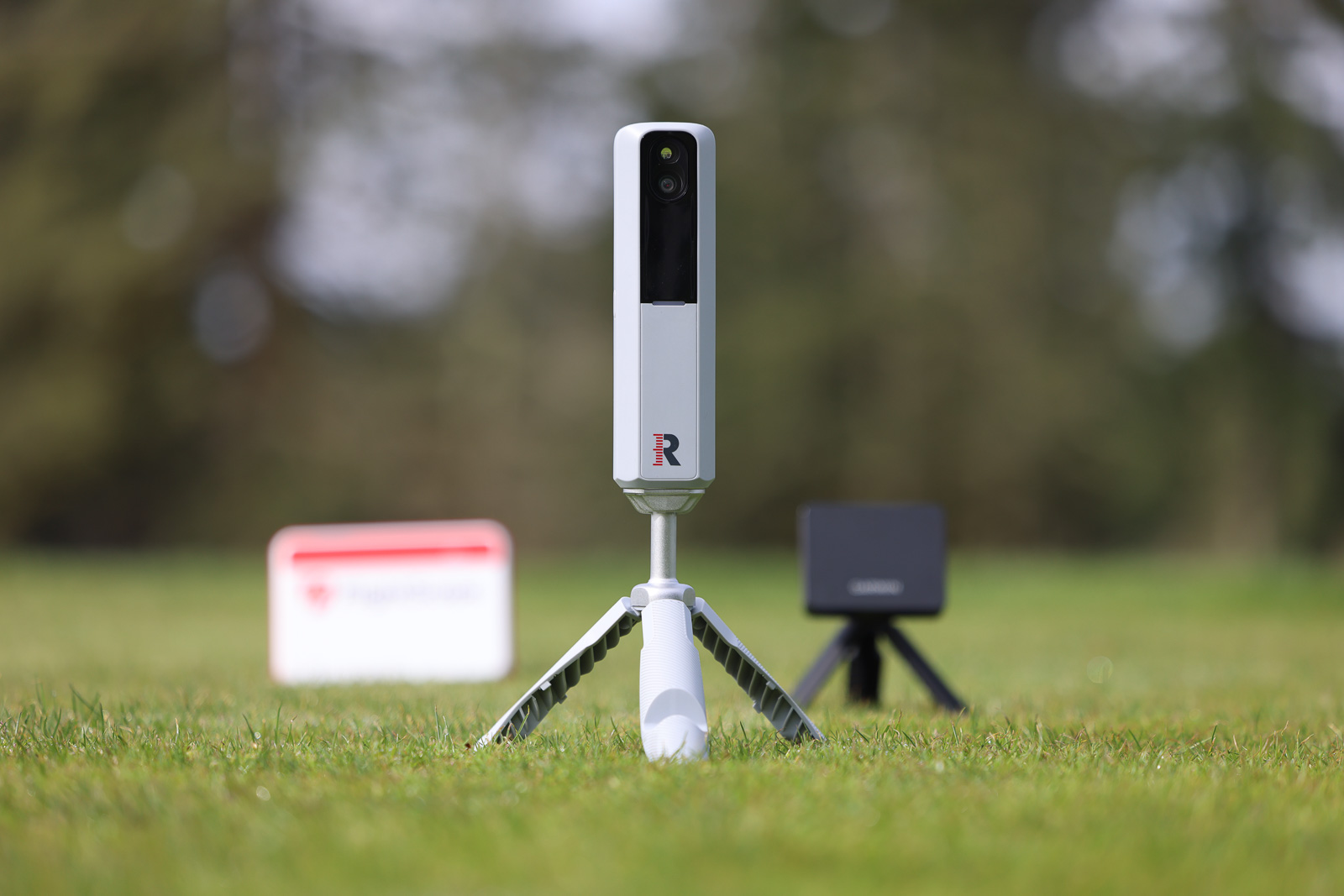
1. Why Do You Want One?
Seriously. It may sound like an obvious question, but not enough people stop to consider it.
So, really, why do you want a golf launch monitor? Like, what are you planning to do with it?
There are no wrong answers, but you need to resolve this question. Are you buying this to get better? To have fun? To play golf in the offseason? Is it to play simulator golf with your buddies?
Of course, it’s almost certainly a combination of all of those things. But it’s important that you identify the primary driving reason you want a launch monitor, as different devices lend themselves to certain use cases better than others.
2. Where Are You Going to Use a Launch Monitor?
We talked about the why. Next is the where.
So, are you planning to use this in your house? Or out in the yard with a hitting net? Or are you looking for something that you can take out to the range for practice sessions? Maybe you want a launch monitor that’s flexible enough to do all of those things.
You want to get really specific in thinking through where you’re planning to use your launch monitor.
For example, if you’re going to use this out on the range, what type of range is it? Will you be hitting only off of natural grass? Because there are certain launch monitors that do better at reading shots hit off of real turf. You don’t want to buy a device and then realize later that it’s limited to only mat use – or worse, is indoor only.
Is the driving range one of those multiple-story facilities with lots of metal surrounding it? If so, a Doppler radar device is most likely going to have interference issues in that environment.
So having a very specific answer to your “where” question is going to make all of the rest of these questions a lot easier to answer.
3. How Much Space Do You Have?
Piggybacking off of the “why” and the “where” questions, do you plan to use your launch monitor indoors?
If so, you need to understand that different devices have different space requirements.
Say you’re considering the Bushnell Launch Pro. That’s an optical device that uses high-speed cameras to collect your shot data. So because of that, it requires a lot less space than if you’re using a Doppler radar-based system, which has to be placed several feet behind the ball and needs enough space in front of the ball to accurately track what that ball is doing.
If you’ve got tight quarters and you don’t have 7 or 8 feet of space behind the ball plus another 7 or 8 feet of space available in front of the ball, then a lot of those Doppler radar-based options are not going to be the right fit and are only going to lead to frustration.
Or maybe you’ve got plenty of space. In that case, a Doppler radar device might be perfect. They provide a lot of flexibility, features, and bang for the buck.
All that to say, space is a huge consideration. You need the right type of device for where you’re going to be using it most.
Oh, and one thing, don’t forget to measure your ceiling height. Nothing would be more frustrating than to buy a launch monitor, get it all set up, and then put a hole in your ceiling because you didn’t plan properly.
Trust me, I’ve been there.
4. Which Technology Do You Prefer?
Assuming space isn’t a dictating factor, is there a technology that you prefer?
There are two main types of golf launch monitor technology: Doppler radar and optical cameras. Some devices use a combination of both.
As I mentioned, a Doppler radar device is something you’re going to place behind the ball, and it’s going to need more space than an optical camera device.
An optical device is going to be placed right next to the golf ball. So for that type of launch monitor, you only need enough room behind you to swing your golf club freely, and you only need about 8 feet in front of you.
So, generally speaking, an optical device is going to require about half as much space as a radar device.
But if you’re trying to spend less than $1,000 or $1,500, the only good optical solution is probably the Square Golf Launch Monitor. So budget, which we’ll discuss below, may be a deciding factor as to which type of technology you go with.
Now, it’s not like optical is always superior to radar. For instance, kind of the gold standard of launch monitors is Trackman, which costs upwards of $30,000 or $40,000, and it is a Doppler radar launch monitor.
Another leader in the space is the $20,000 Foresight QuadMAX, which is an optical launch monitor.
The point is that there are very good, very high-end, very accurate devices available in either the optical or radar camps. It really comes down to what is going to be right for you, your needs, your space, your budget.
But one thing you need to consider is, who will be using this launch monitor?
If you go with an optical device, which sits across from where you’re hitting, that’s really only going to be the right choice if you plan to play with all right- or all left-handed players.
Because, otherwise, you’re going to have to move the launch monitor every time the opposite-handed player takes their turn. Playing a round of simulator golf with a group of people really isn’t going to be a great experience if you’re having to constantly change your setup.
If that’s something you envision doing often, you’re probably better off going with a Doppler radar launch monitor that sits behind you and can very easily accommodate both types of golfers.

The other alternative is if you’re planning to set up a higher-end, dedicated simulator studio, you can use an overhead device. These are optical launch monitors that hang above the hitting area, so they can easily cater to both right- and left-handed golfers.
So if you’re looking for ultimate convenience, an overhead device is the way to go. But they’re also very expensive. At minimum, you’re looking at a spend of about $5,000, which is a much higher minimum than you’d find with either a Doppler or optical unit.
And an overhead device won’t afford you the flexibility of using your launch monitor anywhere beyond in that dedicated space.
5. What’s Your Budget?
This one might be the most important question to answer and the biggest differentiator in helping you decide what options are available to you.
As you might have realized from looking around at launch monitors, these things can cost anywhere from a couple hundred dollars all the way up to 20, 30, 40, 50 thousand dollars, or even more.
In many cases, it’s not just the cost of the launch monitor that you need to consider. This is where we start to see our previous questions funneling down into this one.
For instance, maybe you just want a launch monitor to take out in your backyard. Cool. For under $500, you can get a device that’s going to be reasonably accurate and make practice more fun.
But guess what? You’re still going to need a net to hit into. And you’re going to need a mat to hit off of. All of that needs to factor into your budget.
Another consideration is special golf balls. In many cases, if you want accurate spin data, you need specially marked balls, and they’re kind of expensive. Titleist RCT balls, for instance, cost $70 a dozen.
Hitting on a launch monitor at home and want to make sure you have the most accurate numbers possible? In most cases, these are the balls you want.
So, how much should you plan to spend on a golf launch monitor?
If you’re just looking for something that you can take out to the range and have some fun with, you can do it for around $500.
If you’re looking for a nice backyard setup with a net and a mat, you can probably get it done for under $1,000. But I’d recommend budgeting for between $1,000 and $2,000 to make sure you’re getting everything that you need.
If you’re planning to build a simulator studio at home, I think the absolute minimum I’d plan on is about $2,000, but that’s for a fairly janky setup. That might be like if you were using a TV that you already own and didn’t need to buy a projector.
All of the accessories needed to do a sim studio right can add up very quickly and make that cost much more expensive.
If you’re trying to achieve something that’s close to a professional setup, something that really feels like a proper simulator studio, you should probably expect to spend at least $7,500. That’s taking into account all of the things—the launch monitor, the mat, the projector, the impact screen, the special golf balls.
The good news is now there are very good “sim in a box” type packages you can get with all of the most popular launch monitors, that will make this pretty easy.
So while you can do an indoor setup on a budget, just make sure you’re factoring in all of the things you’ll need and how professional you want your setup to look and feel.
As for the launch monitors themselves in a pseudo-professional-type setup, if you’re looking for a basic Doppler radar device, I’d expect to spend a minimum of $500 to $1,000.
That’s going to get you in the range of launch monitors like the Voice Caddie SC4 Pro, the Garmin Approach R10, and the Rapsodo MLM2PRO.
On the optical side in the budget range, you’re pretty much limited to the Square Golf Launch Monitor.
If you have a little bit more money to spend, the FlightScope Mevo+ is my overall best recommendation. If you use our coupon code (BREAKINGEIGHTYPLUS) and if they have any current sales going, you’re going to be able to get that between $1,800-$1,900. And then there are going to be some add-ons if you want extra features and data.
The Mevo+ is my favorite middle-of-the-road device that can do just about everything at a great price point. But, it being a radar device, you need to make sure you have enough space. The Mevo+ is going to need about 15 feet, all-in, for it to record accurate data.
Other than with the Square, if you’re looking for an optical launch monitor, you should plan to spend at least $2,000.
If you can still find one, the outgoing Bushnell Launch Pro ball data only model retails for right around two grand.
It’s being replaced with the Bushnell LPi. It’s similar, but the major differences are that there is no screen, it’s indoor only, but it does come with club data. It will retail for $2,799.
The SkyTrak+ retails for $3,000, but you can often find it for around $2,500.
Then there’s the Uneekor Eye Mini Lite for $2,749.
So, for a good optical device, at minimum you’re probably going to be in that $2,000 to $3,000 range.
For an overhead device, plan to spend $5,000 or quite a bit more.
6. Are You OK with a Subscription?
There’s another budget consideration for you, and that is everyone’s favorite topic: subscriptions.
Most of these golf launch monitors are going to require a subscription, at least if you want to use all of the features they’re capable of or if you want to use them to play third-party simulator software.
As frustrating as that may be, that’s the nature of the game.
Subscription costs can range from a fairly nominal hundred bucks a year up to $500 a year for the FSX software with the subscription-based Foresight Sports or Bushnell launch monitors.
There are subscription-free Foresight launch monitors, but for the GC3S or Bushnell LPi, if you want to use pretty much any software, whether on an iPad or gaming PC, you’re going to have to spend $500 a year.
(The Foresight GC3 doesn’t have a subscription, but does cost thousands more.)
So, as you’re thinking about which launch monitor is right for you, make sure you take the time to research all of the various subscription rates. That’s going to have a big impact on your year-over-year budgeting. The actual cost of ownership over five years may be significantly more than you initially thought.
Now, if you’re just totally opposed to paying a subscription, you do have some options.
One is the Voice Caddie SC4 Pro for around $500.
Another is the Rapsodo MLM2PRO, which is $699 with a subscription fee of $199, but they recently made it so that for $500, you can unlock it for life. So for $1,200 all-in, you can get the Rapsodo MLM2PRO, which is a pretty good deal.
The FlightScope Mevo+ is another device without a subscription. And for all the features that it offers, that’s really one of its biggest selling points.
The Square is another subscription-free device. But you do have to buy credits for every hole of simulator golf you want to play. These are affordable though, and it comes with enough to play 55 full rounds.
When you get to the higher end, there are options from Foresight Sports like the GC3, GCQuad, and QuadMAX.
So, if you don’t want a subscription fee at all, those are the devices I’d take a look at.
7. How Accurate Do You Want It to Be?
Obviously, everyone is looking for the best accuracy. But how much are you willing to pay for improved accuracy?
As you might imagine, when you have launch monitors ranging in price from $200 to $50,000, there are going to be different levels of accuracy.
A lot of the budget launch monitors can do a fairly decent job of getting reasonably close. And for a lot of people, that’s close enough to get a general idea of some of your numbers, which legitimately can help you better understand what’s going on with your golf swing.
Just keep in mind that with a lot of those cheaper devices, the data metrics aren’t actually measured. Instead, they’re calculated using an algorithm.
So devices like the MLM2PRO, the R10, the SC4 Pro, they’re going to have four to six metrics that they’re actually going to measure, and then the rest are going to be calculated. So, essentially, it’s their best guess at what those numbers should be.
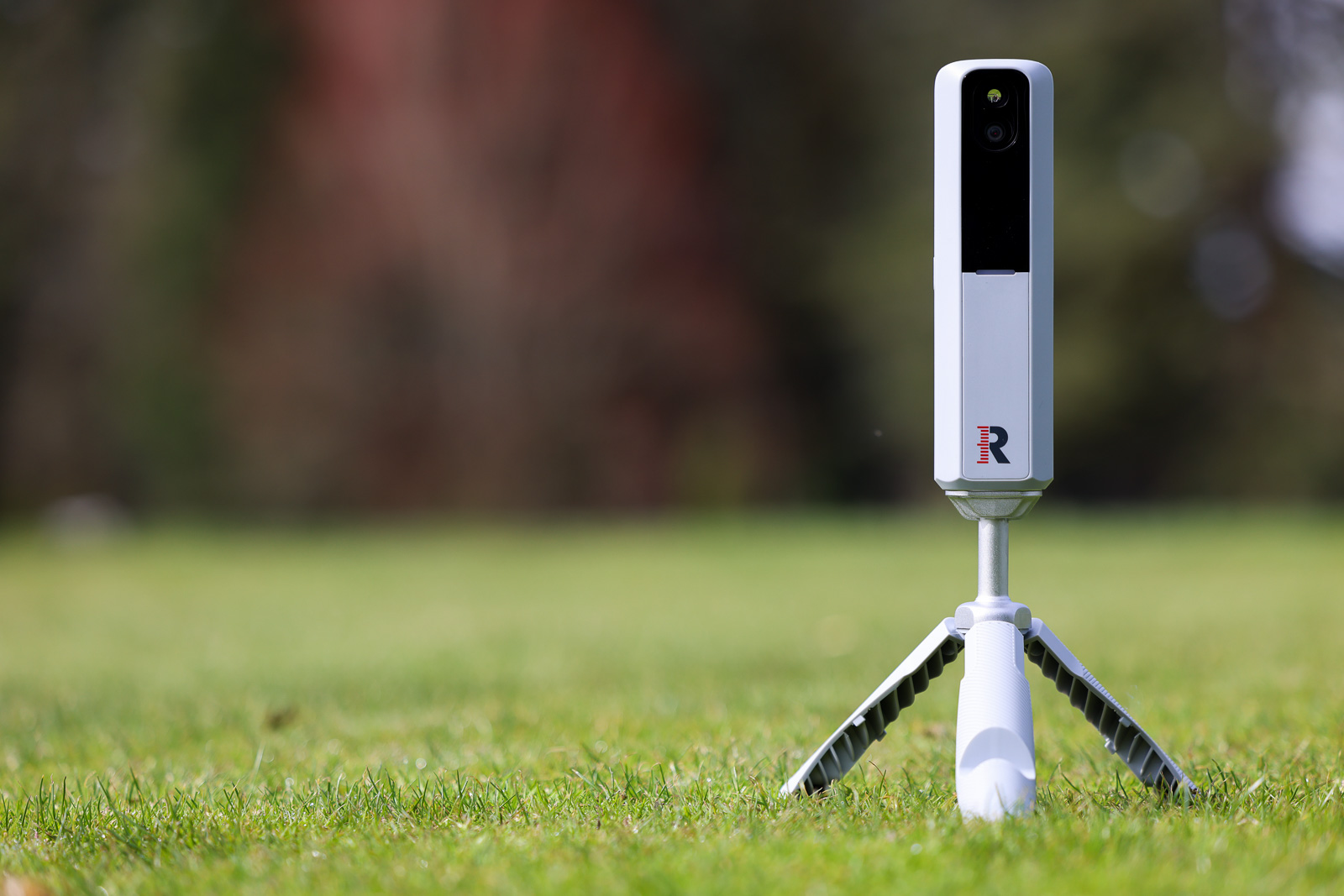
As I said, under the right conditions, all of those devices actually do a fairly good job with those guesses. But you should know that they are in fact algorithm-generated guesses.
A general rule of thumb is: The more you’re willing to pay, the more accurate the launch monitor is going to be and the more metrics that it’s going to directly measure as opposed to calculate.
Getting back to our first question, why do you want a golf launch monitor?
Are you just looking to have some fun and want simulator golf to be relatively realistic? Then you don’t need a device that’s perfectly accurate.
On the other hand, if you’re a teaching professional, club fitter, or competitive player, then accuracy is going to be very important. And you’re going to need to spend more money on your device.
In my experience, I’ve found that most people don’t need the absolute supreme level of accuracy.
Every device I’ve mentioned so far, when set up properly, is going to be reasonably accurate.
And that “set up properly” caveat is key. I’ve gotten dozens of emails for literally every one of these devices saying that it’s not accurate or it doesn’t work.
And for all of the same products, I’ve also received dozens of emails from people saying how great the product is, how dead-on accurate it is, how happy they are with their purchase.
Watch this for more detailed thoughts on “accuracy”:
The difference between those two experiences, especially with these less-expensive units, comes down to making sure you’re using them in the proper conditions and are taking the time to set them up correctly.
8. What Statistics Are Most Important to You?
This question is related to most of the other questions, including why you want a launch monitor, what kind of budget you have, and how accurate you need it to be.
Do you only really care about learning how far the ball is going with each of your clubs? Great. You can spend quite a bit less than the person who really needs club path data and accurate spin numbers and angle of attack and all of those advanced sorts of metrics.
When you’re shopping for a golf launch monitor, look carefully at what data it includes. Also, pay attention to whether those metrics are actually measured or if they are calculated.
Here’s an example of where people often get surprised. The SkyTrak+ is one of the most popular launch monitors on the market. But guess what? As of March 2025, It doesn’t include angle of attack. And a lot of SkyTrak+ owners don’t figure that out until after they’ve bought the launch monitor.
For a $3,000 device, and for as important as that metric is for a lot of people, not having angle of attack on the SkyTrak+ has led to some frustration.
Many devices also differentiate between ball-only data and club data. So if you want things like carry distance, total distance, spin numbers, and apex, you’re going to be able to get those for less than if you also want club data.
If on the other hand, you want the whole D-Plane suite where you’re getting face-to-path, face-to-target, club path, etc., you’re going to need to spend a little bit more.
For instance, with the FlightScope Mevo+, you have the option to pay for the Pro Package, which is what unlocks all of that advanced club data.
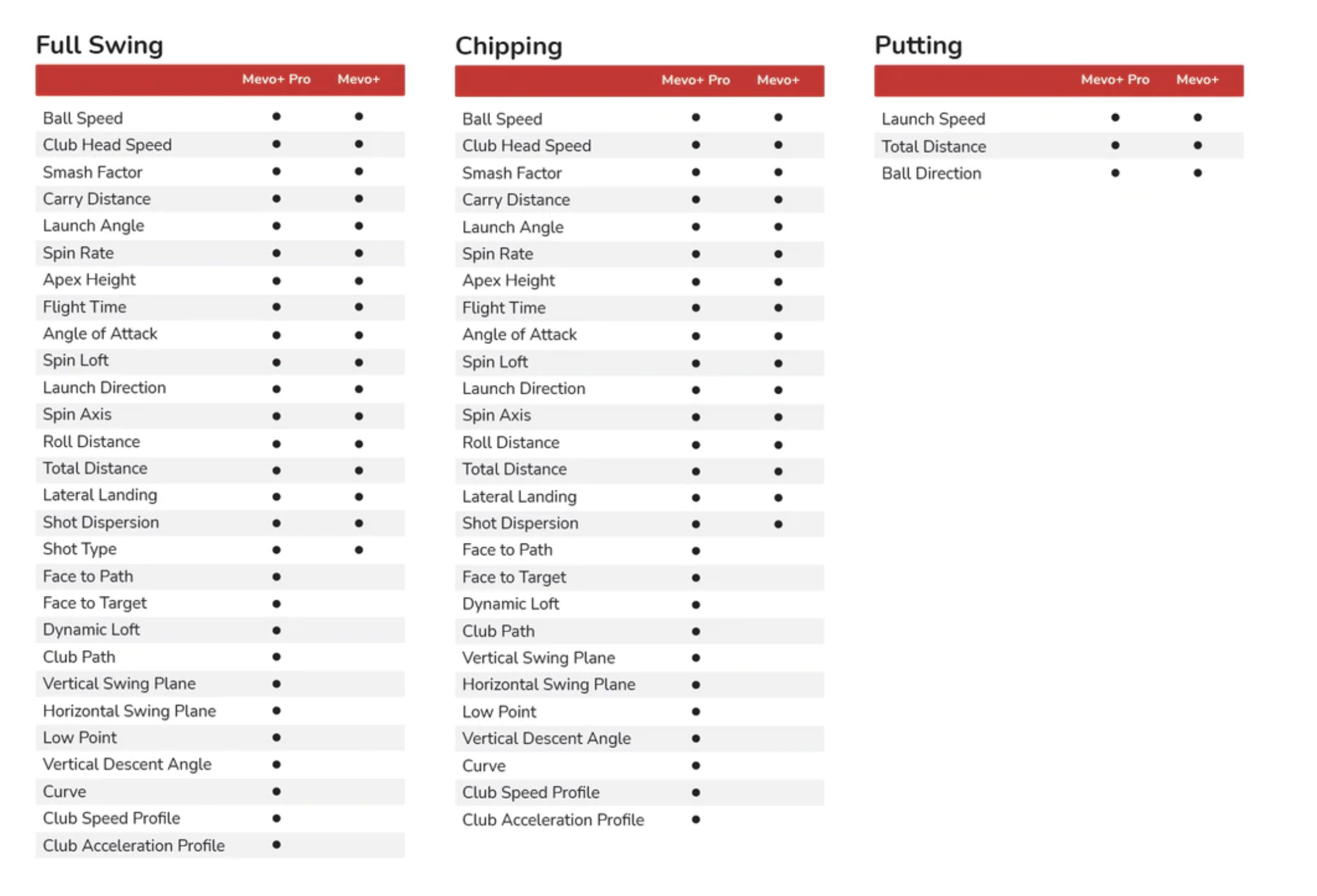
With a unit like the new indoor-only Bushnell LPi, you pay $2,799 and for the first year, you get both ball and club data included. But after that, you have to pay that $500 a year subscription if you want to keep the club data.
It’s important with any of these launch monitors that you fully understand exactly what you’re getting and that it satisfies what you need.
If you don’t care about club statistics, there’s a good chance that you can save some money.
9. What Device Will You Use It On?
Now we’re talking about computer compatibility.
There are some launch monitors with built-in displays that don’t require you to interface with a phone, tablet, or PC. You can just turn on the device and get all of your shot data right on the unit’s display.
The SC4 Pro is one example on the budget side. As for more expensive models, you’ve got the Foresight Sports launch monitors and the Uneekor Eye Mini.
All of those options have built-in screens, which means you can get your numbers with nothing more than the device itself.
But chances are, if you’re spending all of this money, you’re hoping to get the most out of it. And to do that, you’re going to need to interface with an app or a computer program that’s designed to go with the launch monitor.
Most of these devices that I’ve mentioned will have phone apps that you can use to track all of your data and progress over time.
Some of these devices will also have a mobile simulator option. Usually, this means access to something like E6 Connect, where you can play a selection of simulated golf courses on your iPhone or iPad. For this type of setup, you don’t need any additional fancy equipment to play real simulator golf.
But if you’re looking to go all the way and you’re trying to get that true, more professional simulator setup, then there’s a good chance you’re going to need a gaming PC to run the required software.
Of course, that’s going to require you to spend quite a bit more money.
So getting a handle on how different launch monitors work with different simulator software choices and the system requirements that come with those pairings is a really important consideration for your budget as well as what you’re going to be able to do with your launch monitor.
10. What Software Do You Want to Use?
Is there any specific software you are hoping to use?
That’s going to be a key question to answer before you make your launch monitor decision.
Not all of these devices are compatible with the same software packages.
Do all of your friends have GSPro, and do you want to be able to compete against them in online tournaments? Then obviously you’re going to need to make sure your launch monitor is compatible with GSPro.
Do you like the idea of just being able to use your phone to connect to something like E6 Connect?
Or maybe you like the convenience of a little less-realistic simulator solution like Garmin’s Home Tee Hero or Rapsodo’s Courses feature, where you can play nearly simulator golf on more than 42,000 different courses.
Or maybe you don’t really care about playing simulator golf. But you want to make sure the native app that you use is going to provide a really enjoyable and useful practice experience.
All of these are important considerations. They really do play into how much you’re going to enjoy using the launch monitor you choose.
So make sure you do a little bit of research on the software options you’ll have with each device. That just might make the difference between loving or hating a golf launch monitor.
Need a hand with any of this? Leave a comment below, and I’ll do my very best to help.
Final Thoughts on Asking the Right Questions Before Choosing a Launch Monitor
Shopping for a golf launch monitor can feel overwhelming. But hopefully this can serve as a guide to help you through that process.
I wish there was a one-size-fits-all solution.
I wish that I could tell you to just buy one specific launch monitor because it’s the undisputed best.
But that just doesn’t exist.
But if you get all of these 10 questions answered to your satisfaction, I think you’re going to be very happy with your selection.
The key now is for you to take the time to actually do this homework rather than just making an impulse purchase.
Let me know if I can help.
I've spent hundreds of hours reviewing golf launch monitors. Take my quick 30 second quiz and I'll tell you which one is right for you!
This page contains affiliate links. This means that if you click a link and buy one of the products on this page, we may receive a commission (at no extra cost to you!) This doesn’t affect our opinions or our reviews. Everything we do is to benefit you as the reader, so all of our reviews are as honest and unbiased as possible.

